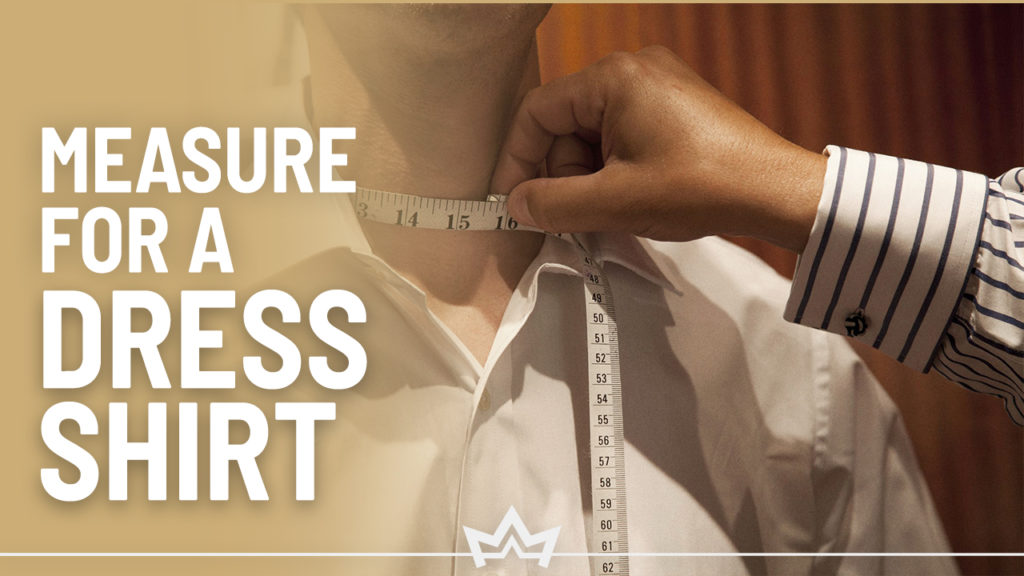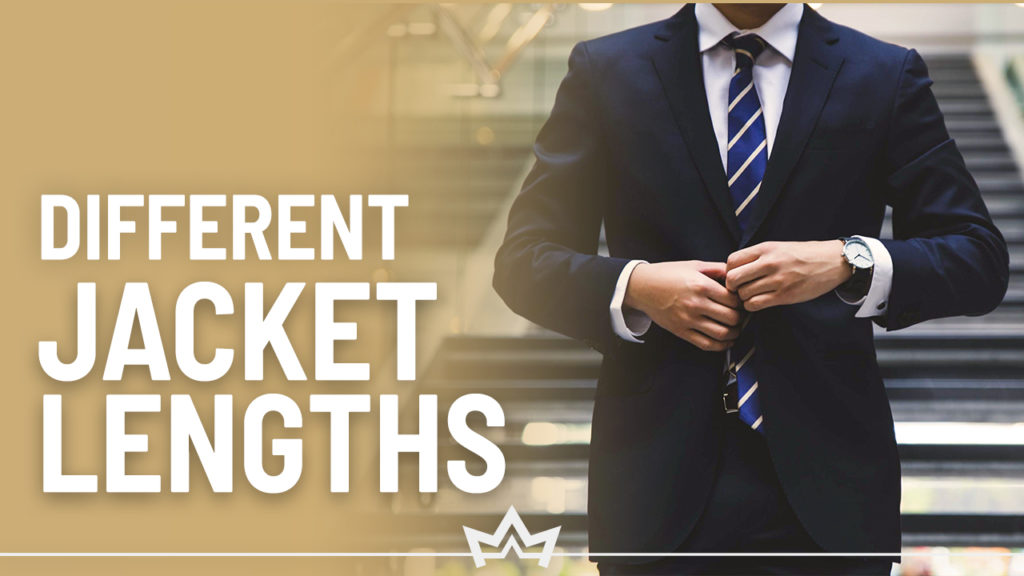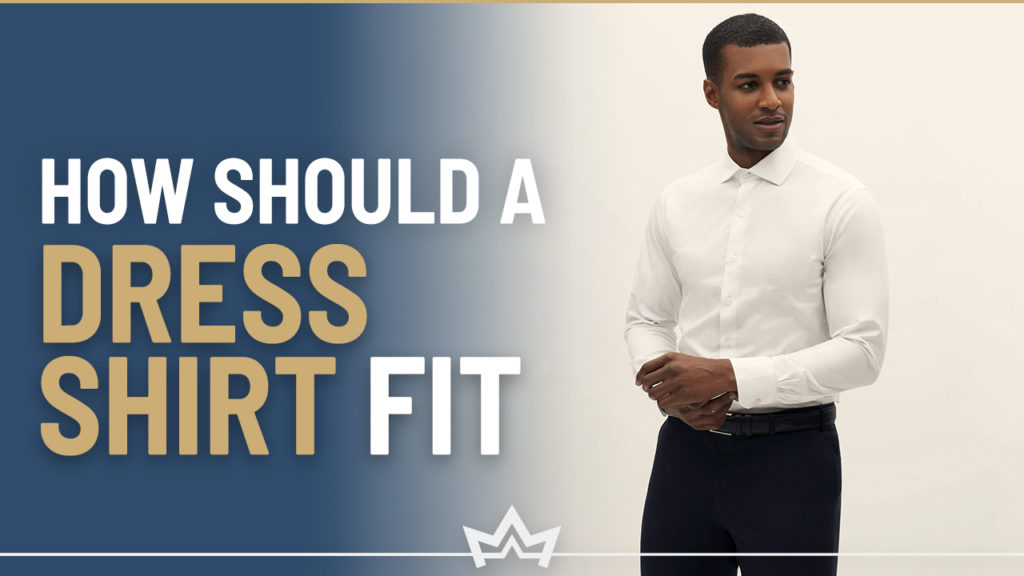If you know how to measure your body for a dress shirt, a great fit becomes easier to achieve.
You can also make a better style decision with both custom and ready-to-wear dress shirts.
This article will be your step-by-step guide to properly measuring for a dress shirt.
You’ll need a soft measuring tape (a.k.a the tailor’s tape) and something to note the measurements.
It’s also beneficial to have someone around to help you take the measurements.
Neck Size
Stand relaxed with your head and chin in a comfortable position and measure around the base of your Adam’s apple.

The tape measure should be an inch below your Adam’s apple.
Place two fingers between the measuring tape and neck and round off the ½” measurement.
Keep the tape gently on the neck. Don’t choke yourself; the tape should be slightly relaxed.
It’s also better to wear a dress shirt with a proper-fitting collar while measuring the neck size.
Shoulder Width
For this measurement, you’ll need someone to assist you. Wear a good-fitting dress shirt and keep the shoulder relaxed as in a natural stance.
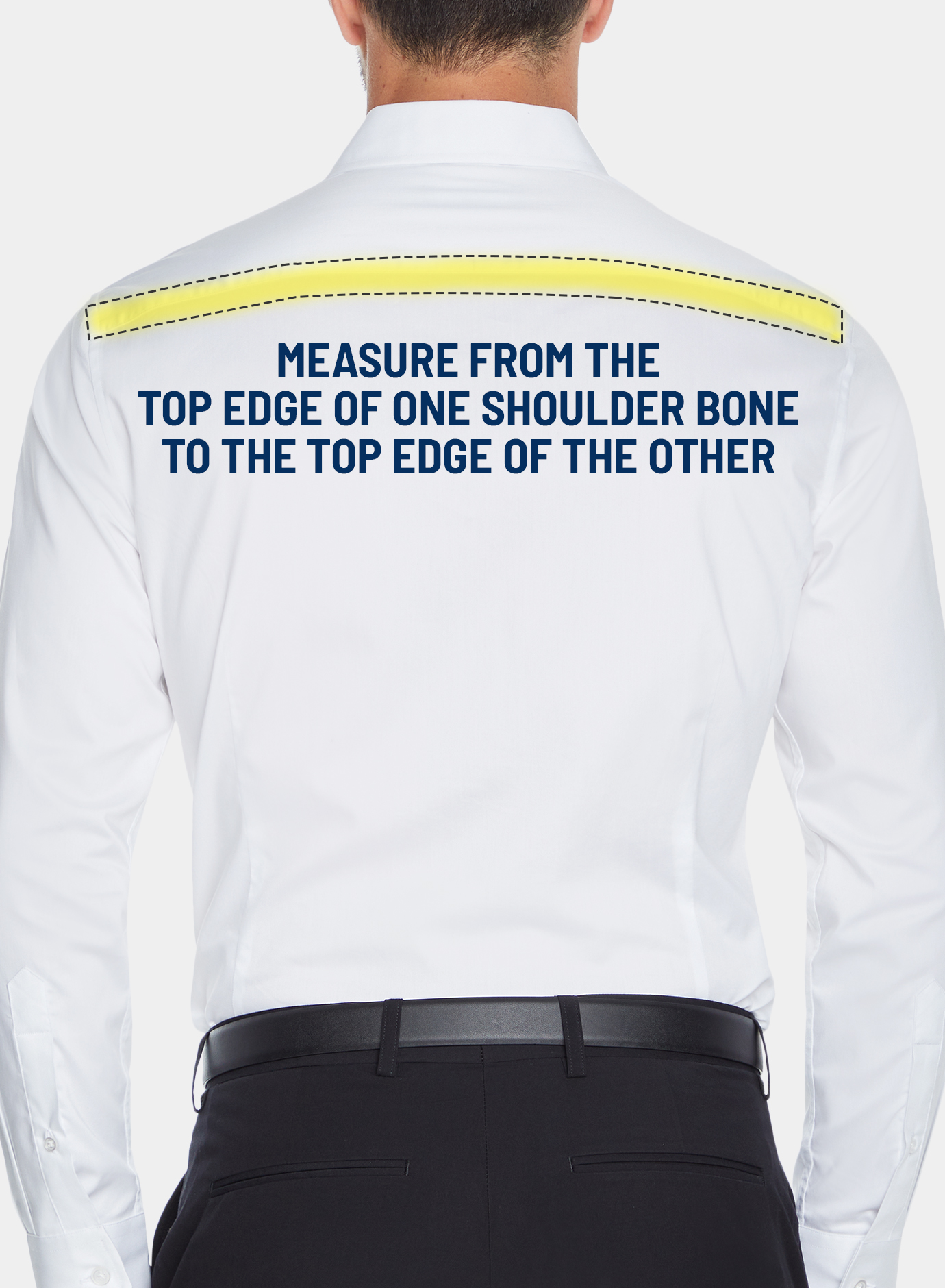
Locate the bones at the top edge of each shoulder. Measure from one bone to the other, following your back’s natural curve.
When measuring shoulder width, you’re determining the shirt’s back yoke.
Therefore, taking the measurement an inch or two below your collar band, like in the upper back, is best.
To locate shoulder bones, place one hand on the upper arm and the other on the shoulder. Measure from the point where both hands meet.
Alternatively, use a shirt that fits you well to determine the shoulder width. Do it by measuring the distance from one sleeve to the other.
Chest Size
Measure around your chest, going beneath the armpits and in line with the nipples.

As you take this measurement, make sure the tape measure stays in place, especially over your shoulder blades.
Keep yourself relaxed with your arms on your side, breathe normally, and don’t inflate the chest.
You can take this measurement wearing a light T-shirt or regular dress shirt. But avoid wearing thick clothing.
Waist Size
For waist measurement, stand naturally, relax and measure around the fullest part of your stomach.
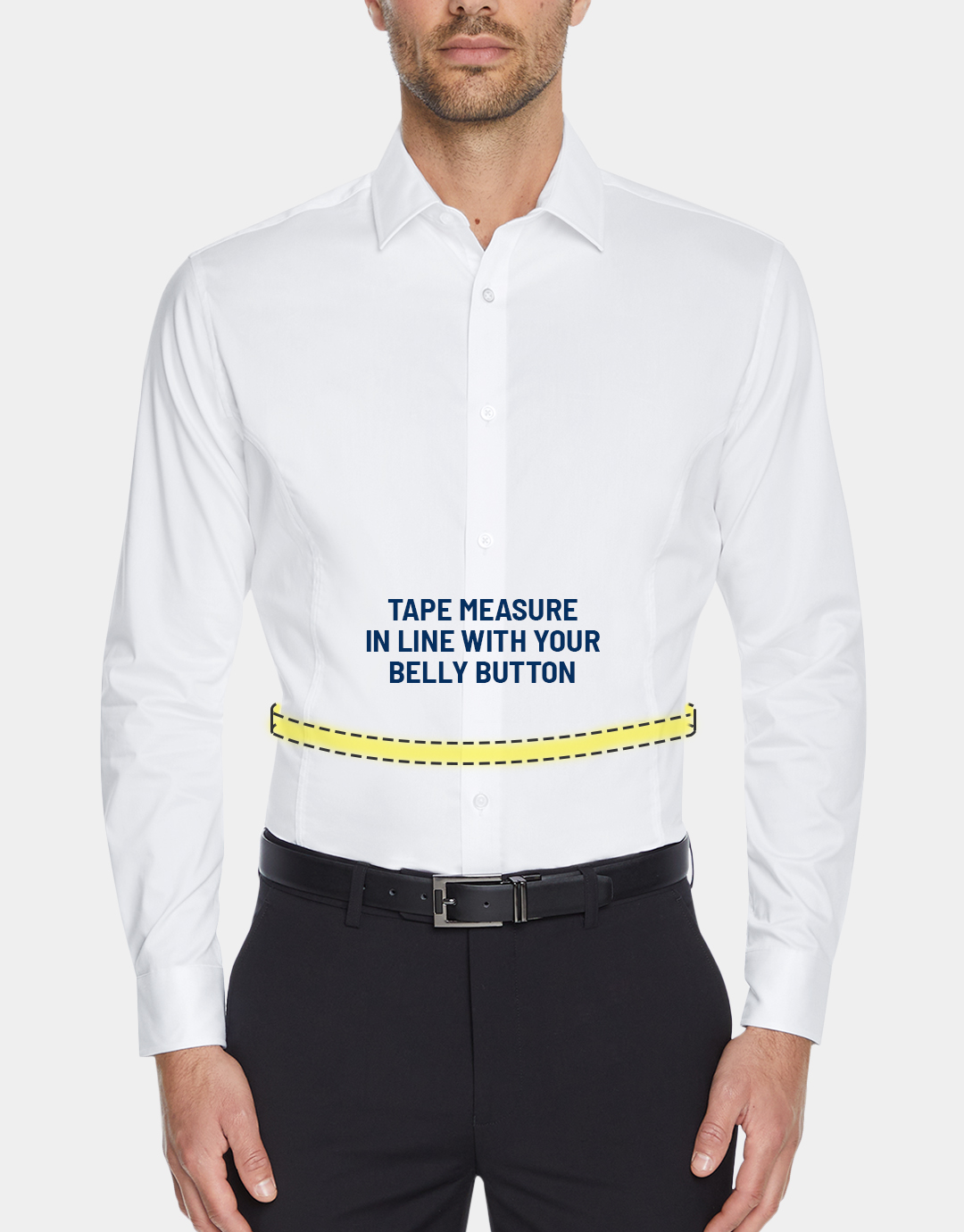
The tape measure should be in line with your belly button (navel).
Gentlemen with big bellies or love handles can measure the waist size half an inch below the belly button.
While taking a waist measure, always breathe naturally and never suck in your belly.
Also, the measuring tape should stay snug and relaxed as you take the measurement.
Lastly, keep in mind that the dress shirt’s waist measurement is different from the pants’ waist.
Dress Shirt Length
Start the shirt length measurement from the base of the collar.
Continue measuring down across your back to the bottom of your rear end, where you want the shirt to end.
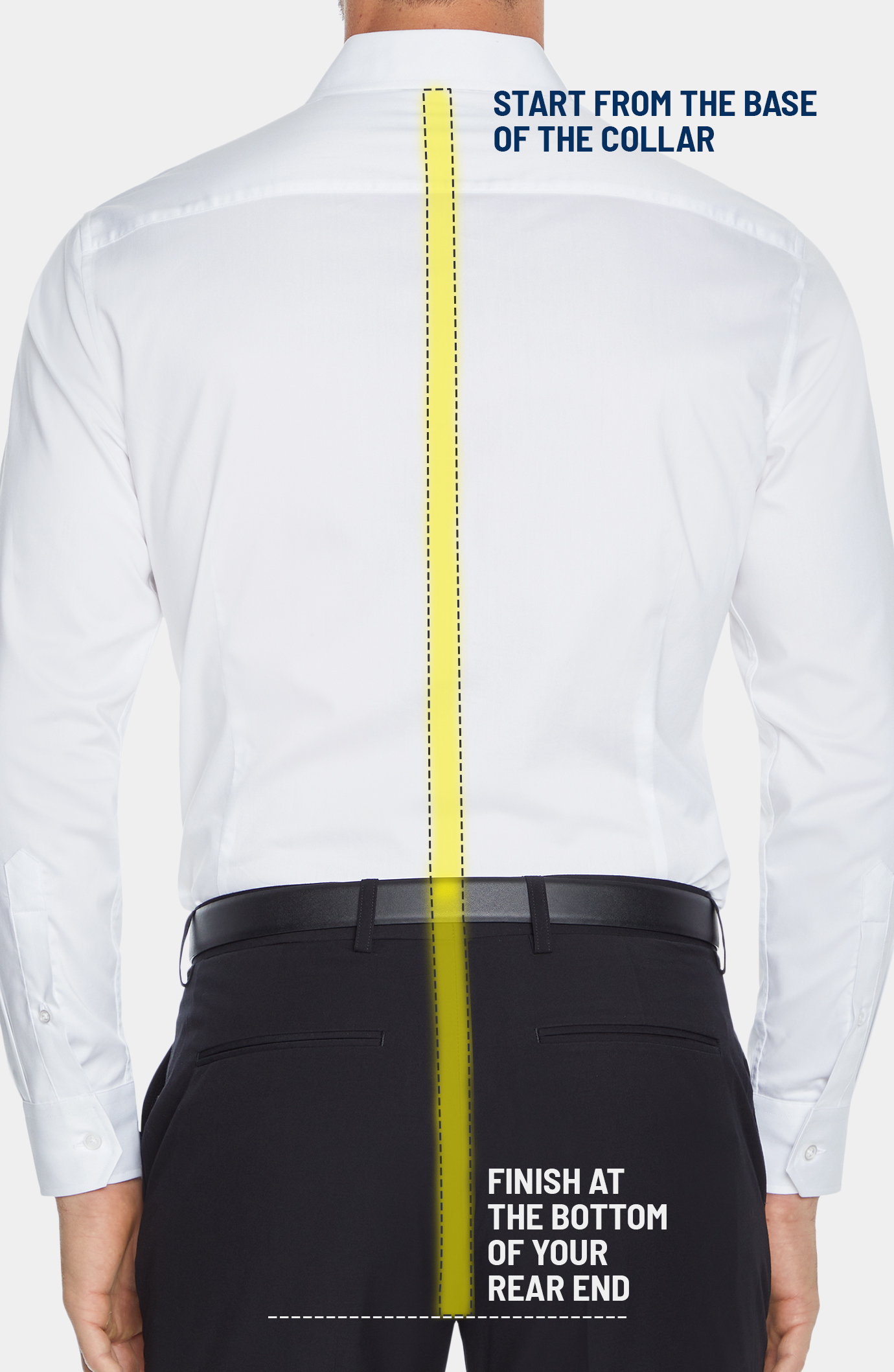
The measurement must completely cover the buttocks for a tucked-in shirt.
Measure the length till the mid-buttocks if you intend to wear the shirt untucked.
For gentlemen with big bellies, add 2″ for accommodation if you intend to keep the shirt tucked in.
This measurement is best taken wearing a button-up shirt you think has an appropriate shirt length.
Also, measure twice to three times for perfect measurement since the length is crucial.
Dress Shirt Sleeve Length
Identifying the sleeve length is a three-step measurement.
First, measure the length from your nape (back of the neck) to the tip of the shoulder (same point used for shoulder width).

Next, measure from the tip of the shoulder to the elbow.
Finally, hold the tape to measure down from the elbow to the beginning of your wrist.
The body should be completely relaxed to measure sleeve length properly.
Left and right sleeve lengths can sometimes differ. In such cases, take the average of the two.
Lastly, sleeve length is often mismeasured. Therefore, take an average of three measurements for accuracy.
Round off the quarter-inch measurement to the nearest half.
Measure a Dress Shirt Bicep
Relax the arms in a natural pose by your side.
Wrap the measuring tape around the biceps and take measurements from the largest point.

It is usually just below the armpit and in line with the nipples.
When measuring, do not flex your arms and keep the tape measure snug but not tight.
The biceps measure also helps determine the sleeve width and, ultimately, the shirt’s fit.
Big biceps are one of the common reasons why men purchase a custom dress shirt.
Measure Your Wrist
Measure the wrist with the measuring tape going over your wrist bone.
The tape should be snug, and the hand must be open.

Round off this measurement to the nearest quarter; this will be your wrist size.
The cuff circumference is calculated from this measurement. The industry standard is to add 2 inches.
Note that the measurement will be the same for any cuff type, whether it’s barrel or french.
Lastly, wearing a watch should not affect the wrist measurement.
Differences in Dress Shirt Sizes
After recording all the body measurements, you can correlate these to find the right dress shirt size.
It’s also important to know the shirt sizing charts.
There are two size charts for dress shirts: alpha and numerical.

Alpha sizing accounts for different factors in shirts to give a round-off scale.
This scale can vary from XS (extra-small), M (medium), L (large), XL (extra-large), to XXL (extra-extra-large).
These sizes are made to cover the masses.
For example, shirt size M covers chest around 40-44″, length around 30″, sleeve length around 34-35″, and is appropriate for height 5’8″ to 5’10”.
In comparison, numerical sizing gives a better overview of actual measurements.
Numerical sizing considers neck size and sleeve length.
At the same time, chest and waist sizes are derived from neck and sleeve measurements.
The first and second measurements on the label represent the collar size and sleeve length, respectively.
Numerical sizing is more common nowadays, and you can see them on shirt labels.
How a Properly Measured Dress Shirt Fits
Proper measurements set a path for your dress shirt to fit perfectly.

Generally, a well-fitted shirt flatters the body, is comfortable, and makes the person look elegant.
More specifically, the shirt collar must sit comfortably on your neck. It should be snug and not overly tight.

The two fingers I’ve mentioned while measuring the neck provide the neck with adequate room to be comfortable.
Similarly, the dress shirt’s shoulders and chest should be generous enough to allow easy movement.
The shirt’s length must be appropriate to stay tucked in.

The shirt’s sleeves gradually taper from arm to wrist for a perfect fit. That’s why you need to take both width and wrist measurements separately.
Sleeve length should also be appropriate enough to extend half an inch of the cuff from the jacket.

Lastly, the shirt cut should complement the person’s style. More on it in the next section.
How the Dress Shirt Cut Affects the Size
Often there is very little difference in the measurement of different shirt cuts.
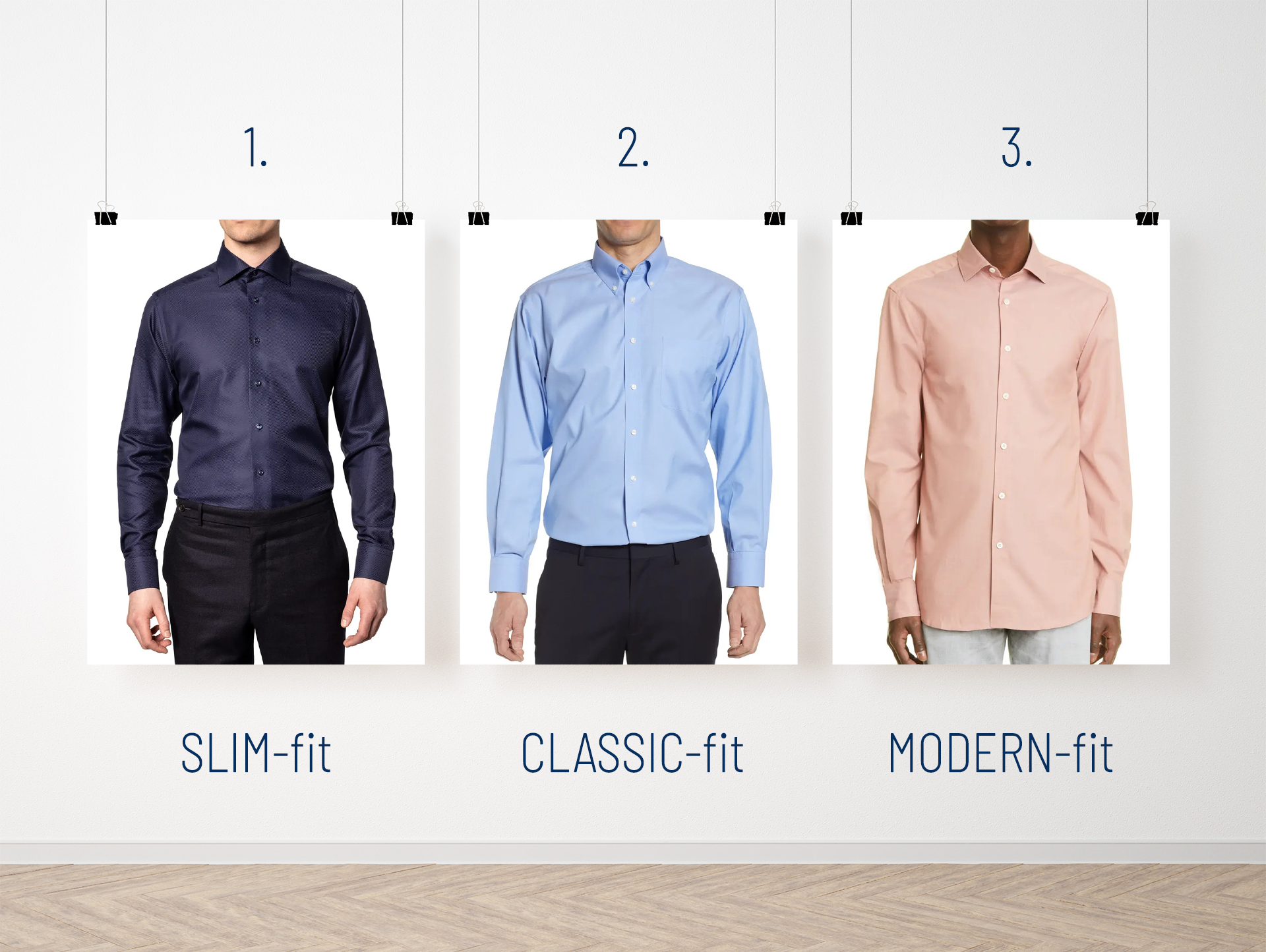
But the way they feel actually makes them unique. The four shirt cuts are classic, modern, slim, and skinny.
The classic (regular) fit is all roomy. It offers a spacious torso, big armholes, and less-tight sleeves.
Thus, the shirt appears as if you have gone a little relaxed with your sizing.
Slim-fit is currently the standard. It has high armholes, a close-fitting chest, tapering sleeves, and no excess fabric.
It’s a shirt cut made to look like it is tailored according to your measurements.
Extra-slim in a time-only shirt cut and is also becoming popular these days. It’s tight with a limited range of motion, appropriate for lean gentlemen.

